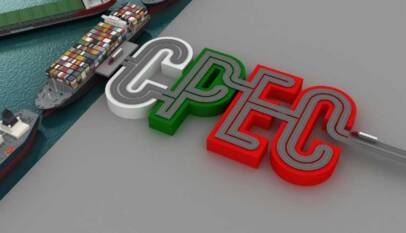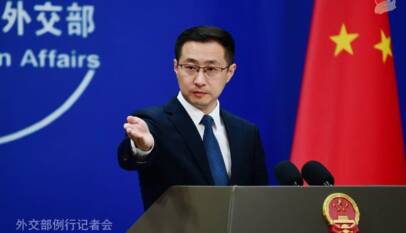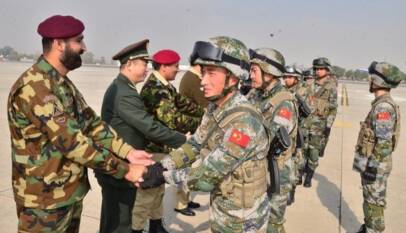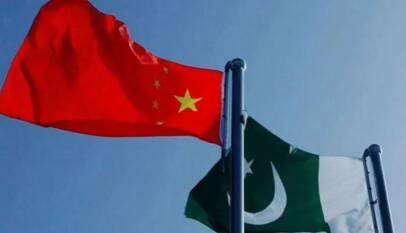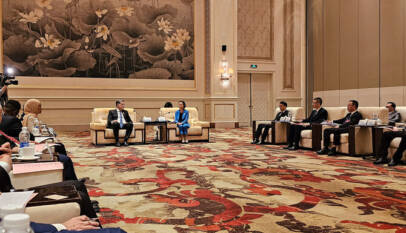Industrialization under CPEC Phase-II to boost Pakistan’s share in Global Value Chains: Libijian
China’s Consul General in Karachi Li Bijian, in an interview, remarked that the industrialization process under CPEC Phase-II would increase Pakistan’s share in global value chains. While commenting on existing and planned projects under the CPEC framework, he said that there are 33 CPEC projects in total, among which 16 projects under construction and 17 projects are already in commercial operation. The first phase, he said, focussed on energy and infrastructure, while the second phase would boost industrialization. He said that both countries can boost trade relations through the Free Trade Agreement and hinted at increased and high-quality investment in lieu of CPEC Phase-II. Moreover, he also shared China’s experience of COVID-19 containment.
KARACHI: China’s Consul General in Karachi Li Bijian talked about the country’s industrial transfer goal and an expected increase of Pakistan’s share in global value chain in the second phase of the China-Pakistan Economic Corridor (CPEC) projects and trade benefits for Pakistan under the upgraded free trade agreement.
Q: Can you elaborate the existing and planned projects under the CPEC framework?
A: There are 33 CPEC projects in total, among which 16 projects under construction and 17 projects are already in commercial operation. CPEC projects in the first phase are basically in infrastructure like power stations and transportation. The projects predominantly improve overall infrastructure quality, making it more convenient for people’s life and creating employment opportunities. The second phase of CPEC will turn to focus more on industrial cooperation, agriculture, medical services, education and poverty alleviation. That means much more projects will be in progress in coming years. We are all looking forward to further deepening the bilateral relationship taking CPEC as a platform.
Gwadar port and free zone have been developed since 2013. After more than seven years’ construction, the port has already been put into full use. The dock is now able to load and unload all kinds of miscellaneous cargo, bulk cargo, roll on-roll off cargo and containers. The free zone includes the south area and north area. The construction of the south area has been completed and 14 companies have settled in bringing investment of about $70 million. More efforts shall be made to develop the north area; especially some favourable policies will be put in place to encourage the investors.
Q: How can bilateral trade balance go in favour of Pakistan’s economy? How will an upgraded FTA prove fruitful for it?
A: China is Pakistan’s biggest trading partner and source of imports as well as the third largest export market, while Pakistan is China’s second largest trading partner in South Asia. From January to October, 2020, Pakistan’s export to China was $1.6 billion, with a year-on-year increase of 11.2 percent; bilateral trade deficit stood at $10.41 billion for Pakistan, marking a decrease of 8.5 percent compared with the same period last year. The above figures demonstrate Pakistan’s export to China began to gain its upward momentum. The products of both countries are strongly complementary and I think there are many things we would do to fully achieve the potential in bilateral trade. First of all, we should make use of our free trade agreement (FTA) as a promoter. The protocol to amend the FTA between China and Pakistan came into force in December 2019 and the implementation of the relative tariff elimination arrangement began in January 2020. Bilateral trade has been facilitated and liberated ever since.
And now a few hundred goods produced in Pakistan can enter into the mega Chinese market free of tariff. According to the estimation, the upgraded FTA will increase Pakistan’s export to China annually with a total amount of $6 billion. We should make more publicity and road shows of FTA making sure it’s known to more trade companies and provide them with detailed instructions on how to enjoy those beneficiary treatments therein. Second, we should focus on the second phase of CPEC because industrial cooperation is the key area in this phase. Through accepting industrial transfer, Pakistan could take its advantage in human resources, raw material and preferential policies and establish a more integrated industrial structure domestically, uplifting its position in the global value chain. I think it is a fundamental trajectory for almost every country to boost its export. It proves very useful and practical for China when faced with similar situations in the last few decades of the 20th century.
Q: Does China have plans to expand investments in Pakistan beyond the economic corridor?
A: China continues as the top foreign investor in Pakistan for six consecutive years. Especially after the launch of CPEC, China’s investment in Pakistan has surged by a hefty 50 percent. China’s investment in Pakistan is not limited under the CPEC. Actually we already have plenty of investment projects, namely in infrastructure, sanitation, manufacturing etc., that go far beyond the CPEC. Those together with CPEC projects are an important composite of bilateral economic cooperation. According to the statistics, the accumulated investment amount to Pakistan till October this year reached $10.27 billion.
I believe since CPEC enters into the second phase and Pakistan’s investment environment becomes much better, more high-quality investment projects will be attracted here injecting strong development impetus to Pakistan’s economy.
Q: Can you share Chinese experience of returning to the pre-coronavirus growth trajectory?
A: Because of the rapid and good containment of the pandemic and the strong and effective stimulus response, China is now having a strong economic recovery. China will be the world’s only developed economy with positive growth during the outgoing year, according to international reports. The numbers show China’s economy is robust. Compared to the negative 6.8 percent gross domestic demand shrink in the first quarter on a year-on-year basis, the growth rate was 3.2 percent and 4.9 percent in the second and third quarter respectively.
From agriculture, industry and service output values to international trade value all witness a robust growth in the third quarter (July-September). The growth rates stand at 3.9 percent, 5.8 percent, 4.3 percent and 7.5 percent.
CPEC’s Success Story: $25 Billion Invested Across 38 Completed Projects
ISLAMABAD: A total of 38 projects worth over $25 billion have been completed and 23 develo…




